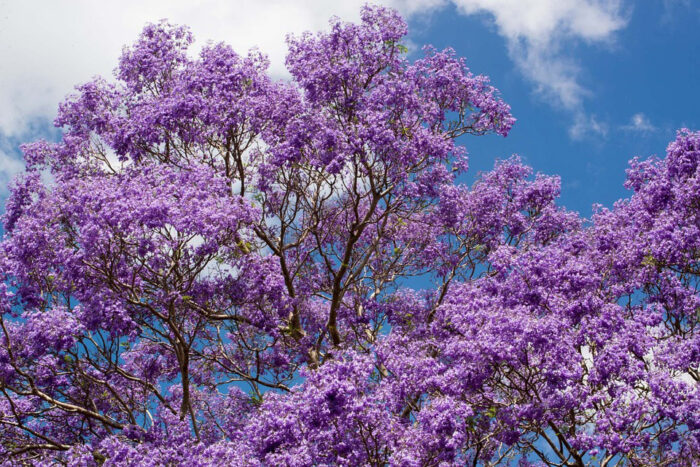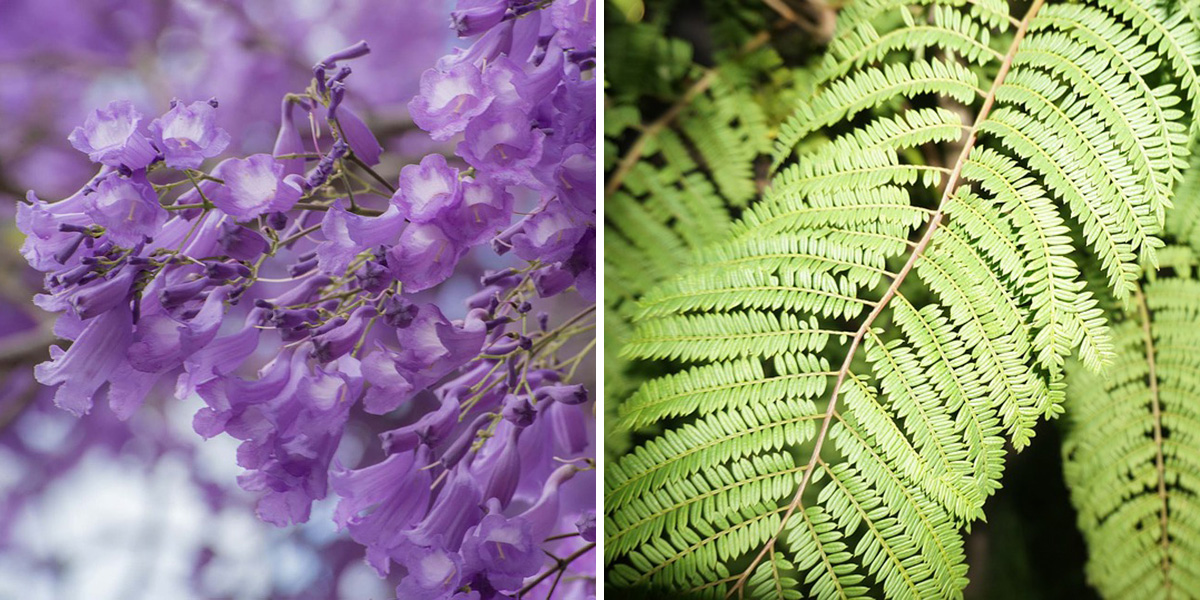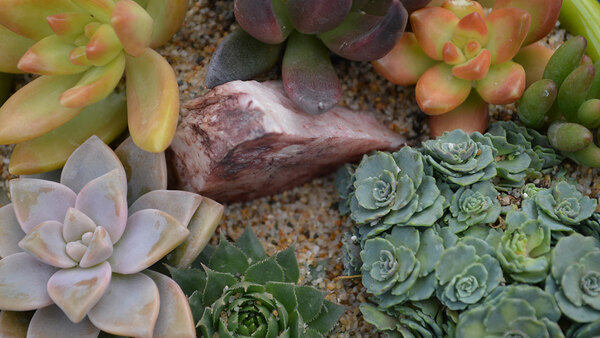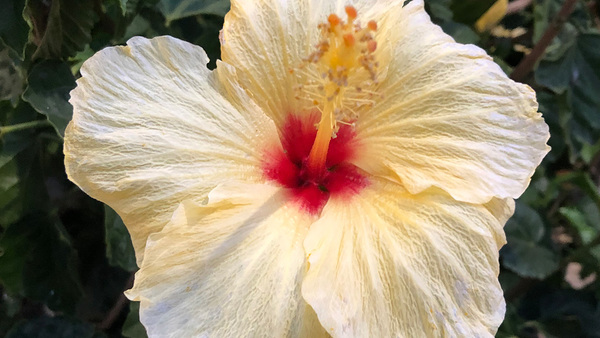
In midspring, the desert is dotted with jacaranda trees (Jacaranda mimosifolia, Zones 9–11) dripping with beautiful purple blooms. It always seems to take us by surprise when they start to bloom, because nothing about this tree seems like it fits in the desert. But trust us when we say they are a welcome sight after our dry winters. Often said to resemble something out of a fairy tale, the umbrella-like canopies of jacarandas provide welcome shade dappled with light.
Jacarandas, also known as blue jacarandas, black pouis, or fern trees, are native to South America. Although these subtropical trees prefer warmer temperatures, they can withstand short drops in temperature down to 19°F, which allows them to still thrive here in Tucson (Zone 9a). Jacaranda boasts fernlike (bipinnate, compound) leaves that grow up to 20 inches in length. It can grow quickly and maxes out around 60 feet tall and wide in an ideal climate.

Jacaranda blooms are violet-colored and trumpet-shaped. Although mature jacarandas will produce innumerable blooms in springtime or early summer, less mature trees may not flower for the first several years. If you live in a warmer zone, you may find that your jacaranda will bloom more often. Either way, when planted in full sun, these beauties will shine!
Jacarandas need sandy and slightly acidic soil to thrive. The soil needs to be deeply watered and should dry out between soaks. Jacarandas do need to be pruned. It’s best to trim off the smaller branches in early spring and make sure you keep an eye out for the suckers that tend to grow vertically. If the branches become too heavy for the tree, the trunk can split. Fertilizing your jacaranda is a breeze. You only need to feed it once a year. If you give it too much nitrogen, your tree may not bloom. We recommend an application of a slow-release 10-10-10 fertilizer in early spring.

If you intend on planting a jacaranda tree, there are a few places you want to avoid planting it. Do not plant your jacaranda near a pool! You will have serious regrets. Although gorgeous, these trees are messy. For us, it’s a worthwhile mess, but you must be cautious about planting them anywhere that could make cleanup more complicated. When the flowers fall, it is in your best interest to rake them up quickly. If you don’t, they will start to rot and become slimy and slippery. Also, beware when planting them near driveways, water features, and pathways. In addition to their fallen flowers, jacarandas also can have large surface roots, which can have adverse effects when competing with sidewalks or driveways.
If we didn’t scare you away with a bit of flower cleanup, do yourself a favor and plant a jacaranda. Spring is the perfect time of year to plant one before temperatures get too brutal. Beyond their pure beauty, jacarandas are relatively disease and pest resistant and drought tolerant to boot. What more can a desert dweller ask for?
All photos are from pixabay.com
—Sheila Schultz and Laurel Startzel are a mother-daughter duo who founded Denver Dirty Girls Container Gardening while living in Denver and have continued their business since moving to Tucson, Arizona.


















Comments
Log in or create an account to post a comment.
Sign up Log in